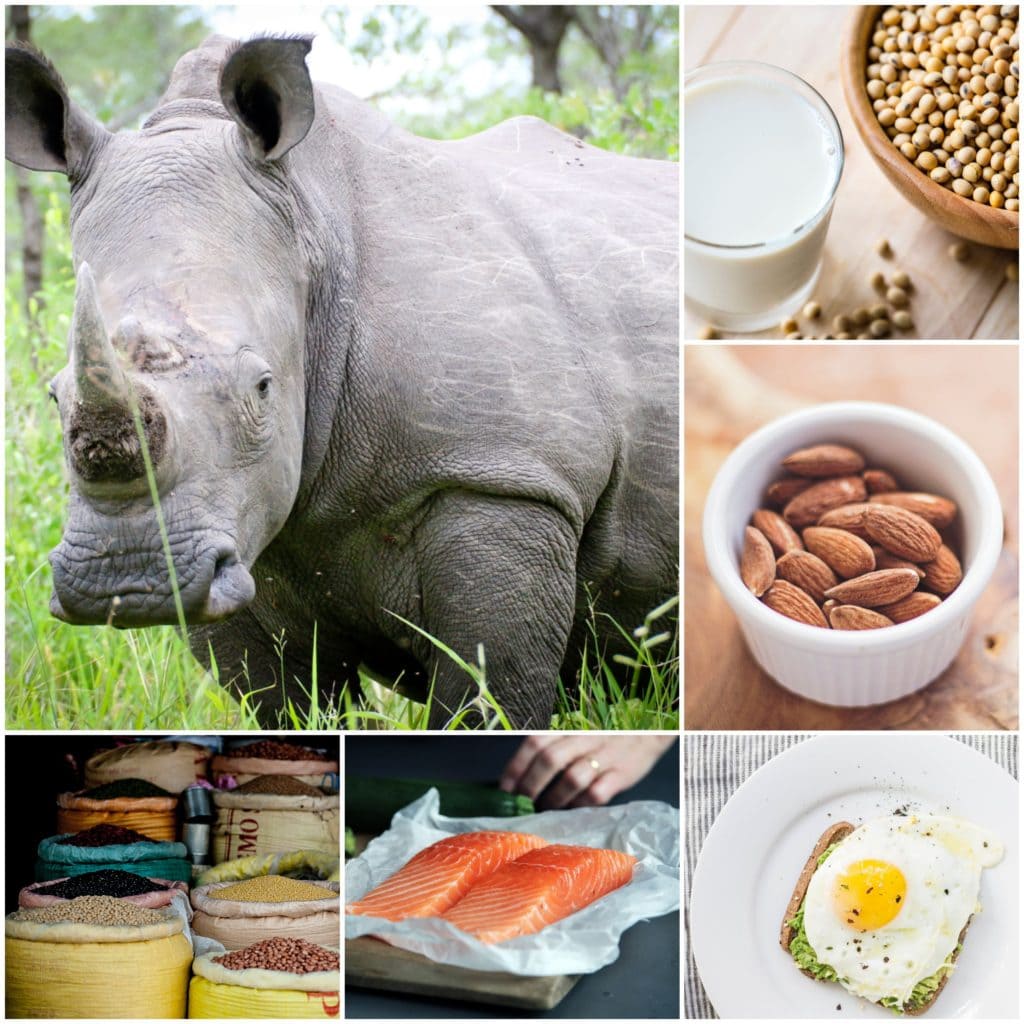Rhinos are big strong animals. And they are herbivores (eat only plants).
But, to supply this massive body with the required vital ingredients, they need to eat all day, tens of kilos of plants.
Sadly, not many of them left, but this is a different super important topic.
As humans, we can be vegans, vegetarians, or meat-eaters.
In all cases (and with more control when vegans) we can, and should consider the quality of protein we eat. Especially if we are athletes or in any other demanding
activity like a tough trekking, mountaineering, etc.
If you don’t want to spend all day eating like a rhino, you should choose the sources of proteins.

There are different scores to each protein source. And, there are different methods to define the quality.
The Food and Agriculture Organization (FAO) and the World Health Organization (WHO) used to have the protein digestibility-corrected amino acid score (PDCAAS) as the common measure for protein quality. In recent years there is more use of the relatively new measure of the digestible indispensable amino acid score (DIAAS). This is a more novel approach which describes better the quality of protein in food.
Higher rank means better efficiency of using the proteins we digest. If consuming lower quality of protein, we will need more of it, and making sure it covers more types of amino acids.
According to the DIAAS approach, eggs, milk, and meat are with higher quality. Chicken, soy, black lentils, broccoli are next in line and with good quality of protein. Rice, corn, and wheat are with low protein quality and, according to DIAAS are not eligible for protein content claims. Actually, only foods with DIAAS > 75 are eligible for protein content claims.
In the above table you can also see the term limiting AA, or limiting amino acids.
If a diet is inadequate in any essential amino acid, protein synthesis cannot proceed beyond the rate at which that amino acid is available. This is called a limiting amino acid.
As the table shows, there are missing amino acids in food and in order to have those missing amino acids, we must of complementary sources. This is extremely important for vegans, as the sources for the required amino acids are limited.
You can read more about proteins and amino acids inside the article “proteins vs amino acids supplements
Leave a comment